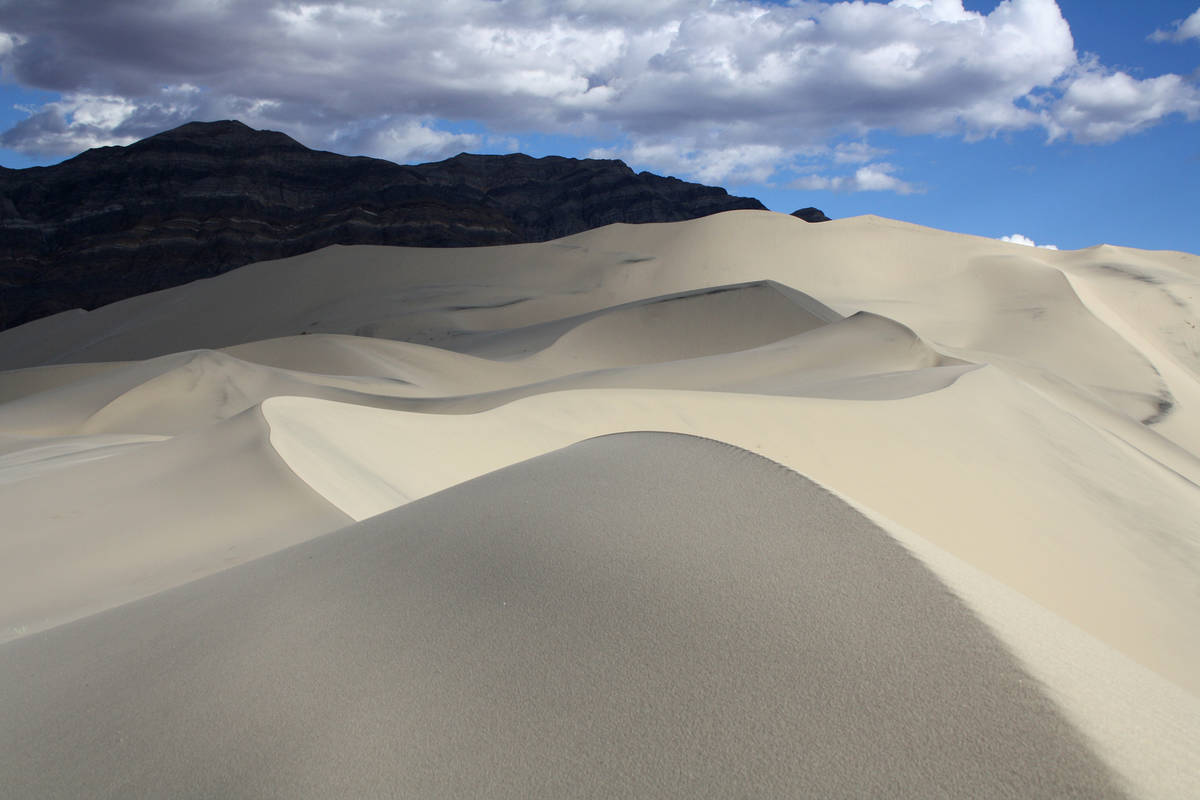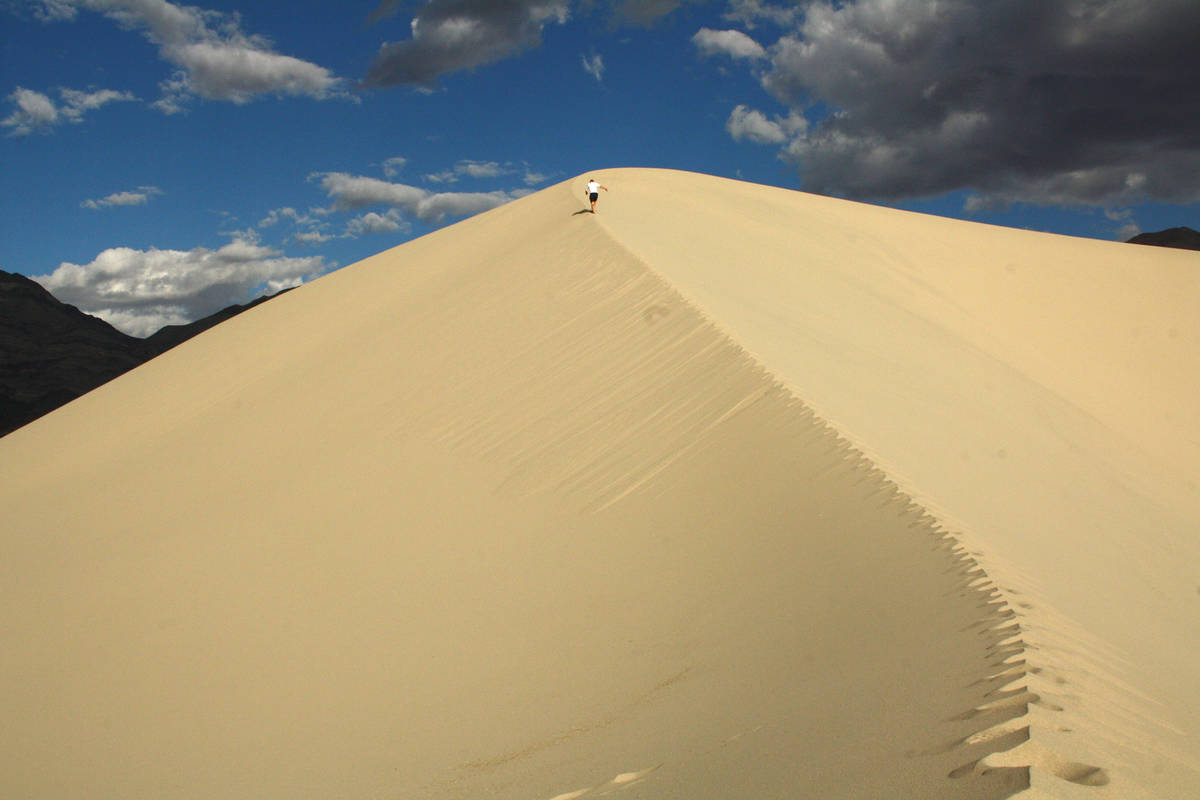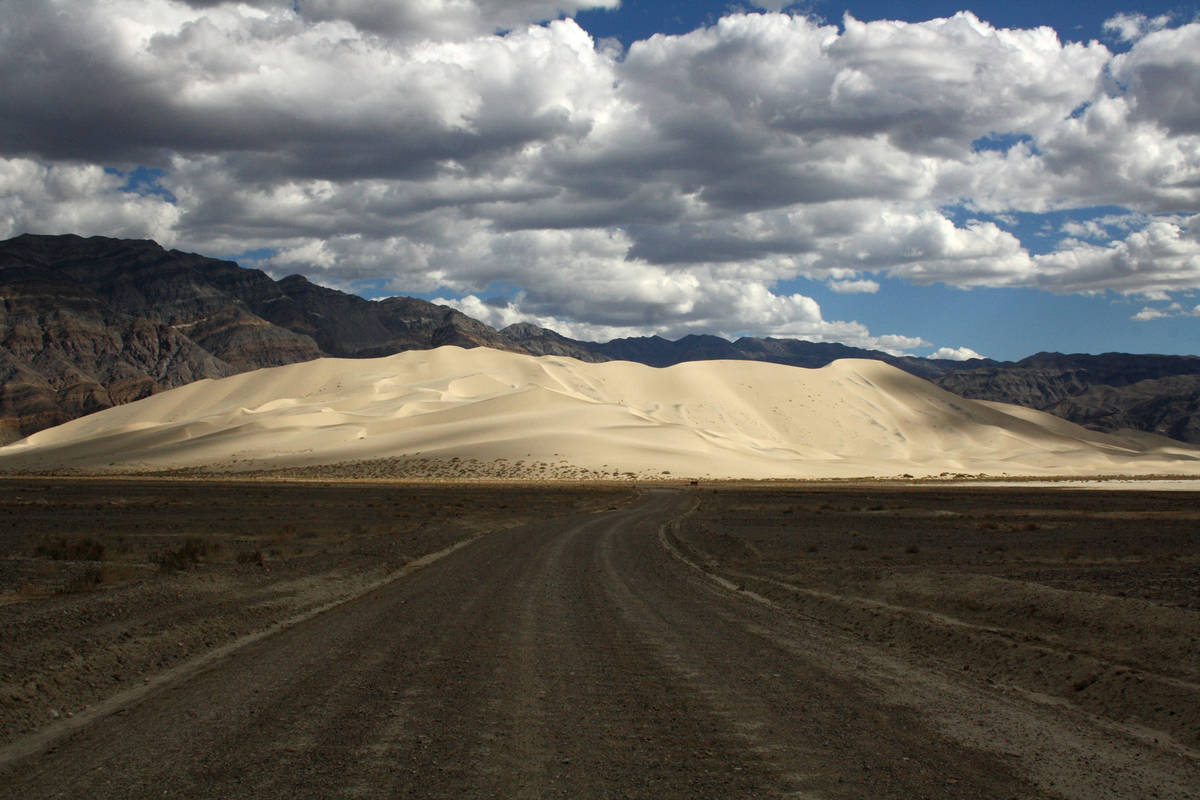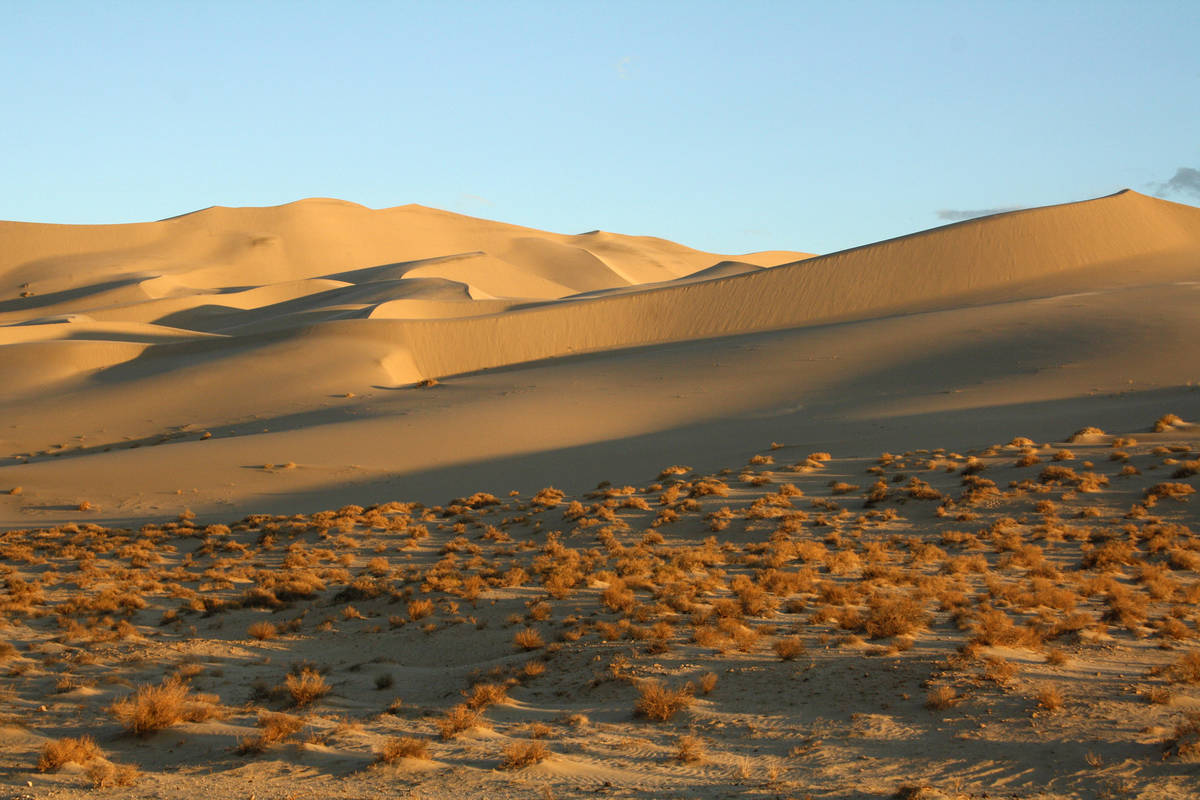Eureka Dunes in Death Valley National Park perfect for adventurers
To visit Eureka Dunes in Death Valley National Park, California, takes preparation and a willingness to drive some rough backcountry gravel roads. It’s quite an adventure just getting there, but in this remote area of the park, you can experience serene and quiet beauty. If you’re up to it, late winter is the time to go.
The dunes lie in Eureka Valley in the extreme northern part of the park, just west of the Last Chance Mountains. Elevation at the dunes’ base is about 3,000 feet. The mountains rise about 700 feet from there, making them the tallest in California.
About 3 miles long and 1 mile wide, the dunes are considered stable, and they are thought to be 10,000 years old. They were designated a National Natural Landmark by the Department of the Interior in 1983.
Unlike many sand dunes in our region, these are closed to off-highway vehicles, other motor vehicles, sandboarders and horses, making them a perfect destination for those who want a quiet getaway.
Though many people want to climb to the top of the dunes, quite a few don’t make it. The sand is soft, so be forewarned that this isn’t an easy trek, especially for children. For those willing to try, the best spot to embark is the northwest corner of the dunes.
They are known as “singing” or “booming” dunes, which can be found in only 35 desert locations throughout the world. When the sand is very dry and a sand avalanche occurs in steep areas, strange sounds can be heard. It sounds like a low-flying aircraft, though others have said it sounds more like a deep note on a pipe organ. Many experts believe that the noise is caused by friction from grains of sand rubbing against each other.
These dunes have five species of beetles and three plants that are endemic, meaning they are not found anywhere else. Look for Eureka dunegrass, Eureka Dunes evening primrose and shining milkvetch. Visitors generally can expect to see coyotes, black-tailed jackrabbits and rattlesnakes.
There are 10 primitive campsites, some with picnic tables and fire rings, all on a first-come, first-served basis.
Travelers to this remote area must be totally self-reliant. Cellphone service is unreliable, and on several visits I made, members of my group were the only ones there.
At the very least, visitors will need a high-clearance vehicle with excellent off-road tires. (I highly recommend two spare tires along with the tools to change a flat.)
Bring water and food — more than you expect to need, in case you are stranded there. Be sure to pack emergency items such as warm clothes, sleeping bags, headlamps and other equipment — even if you don’t plan to camp — and fill the gas tank before setting out.
Hats, an umbrella or a shade tarp come in handy because there is no shade by the dunes. Postpone your trip if rain threatens because the roads can flood. Always check the park’s website or stop at the visitor center for an accurate map for driving in the park, and get the morning update on closures and weather before setting out.
To get there from the hub of Death Valley National Park, in the Furnace Creek area, it is about a 97-mile drive, with roughly 40 miles of that on rough, one-lane, gravel roads. There is an alternative route to reach the dunes from Big Pine, California. www.nps.gov/deva


























